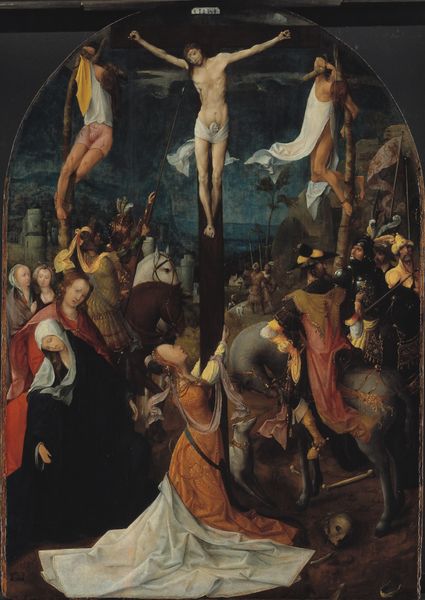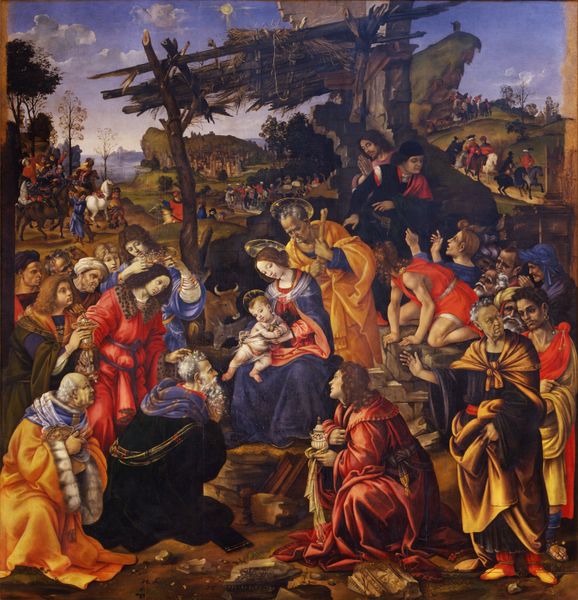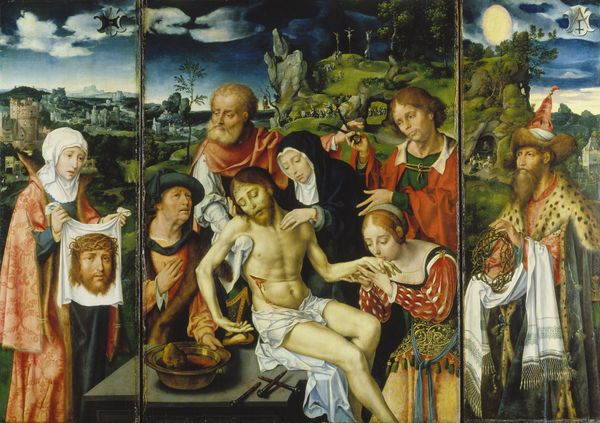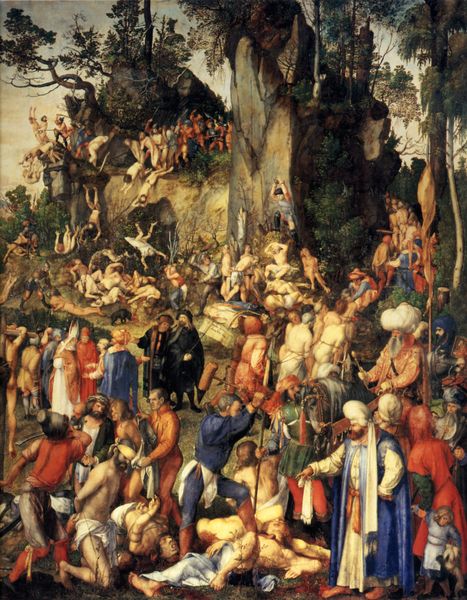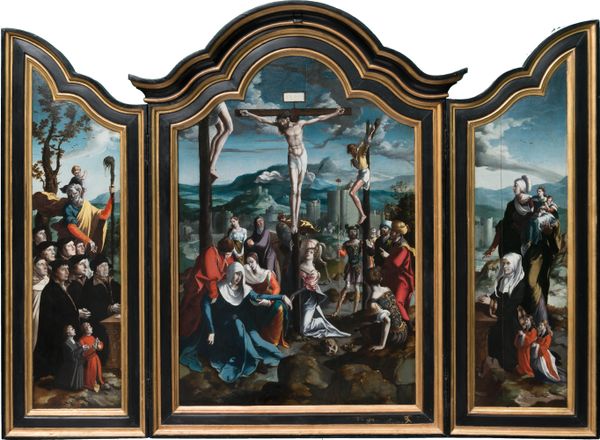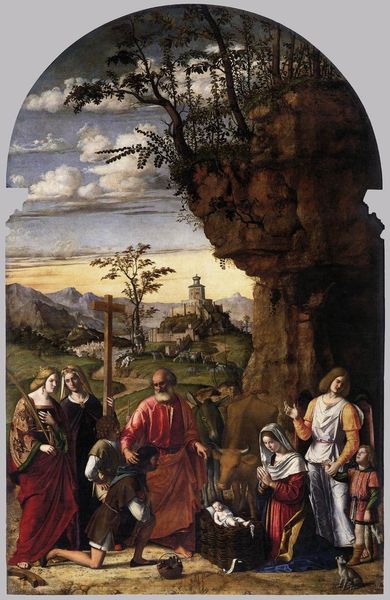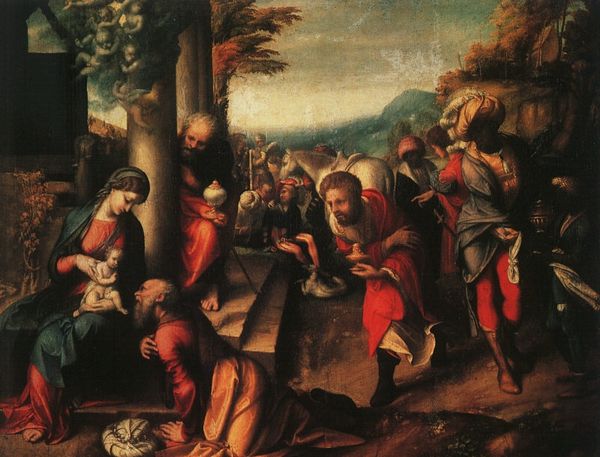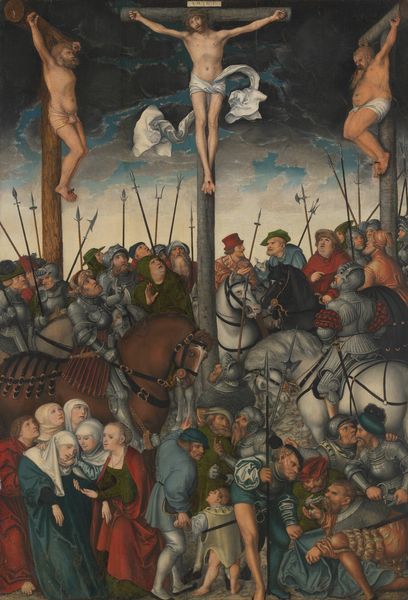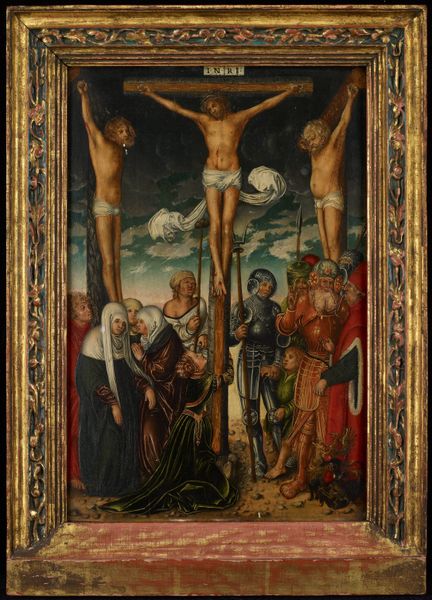
Dimensions: 78.5 cm (height) x 57.5 cm (width) (Brutto), 67 cm (height) x 46.5 cm (width) (Netto)
Lucas Cranach the Elder painted this Crucifixion in Germany, at a time when religious and political landscapes were undergoing dramatic transformations. This scene is not just a depiction of biblical narrative but also a commentary on the social structures of Cranach’s time. The artist was a close friend of Martin Luther and his interpretation reflects Protestant theology by challenging the Catholic Church's established imagery. Cranach uses visual codes, cultural references, and historical associations to create meaning, highlighting the differences between the earthly and the divine. The artist lived in a period marked by the rise of humanism, questioning of traditional authority, and the beginnings of modern science. These intellectual shifts influenced his art, making it self-consciously progressive. To fully understand Cranach’s Crucifixion, one can look into Reformation-era theological debates, political pamphlets, and the artist’s biography. The meaning of art is contingent on its social and institutional context.
Comments
statensmuseumforkunst almost 2 years ago
⋮
Cranach produced countless representations of the Crucifixion, both before and after the Reformation. One of the most famous is that from 1503 in Munich (Alte Pinakothek, Bayerische Staatsgemäldesammlungen); it is a clearly pre-Reformation work on account of the almost physical obtrusiveness towards the viewer. Cranach’s late Crucifixions, and late works in general, are on the other hand tied to the surface of the picture and make no attempt to reproduce a convincing effect of reality. This Crucifixion is moving in the direction of this flat effect - it is, among other things this that produces the "stiffness" and the emblematic quality in the representation of figures - but it is still a spatial image that formally invites the viewer to participate in the scene. In addition, The Crucifixion is a good example of a motif that could be incorporated without problem into the Reformation repertoire. Luther greatly preferred the historical portrayal of the Crucifixion rather than the iconic in which the Crucifixion is isolated outside time and place.
Join the conversation
Join millions of artists and users on Artera today and experience the ultimate creative platform.
